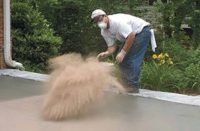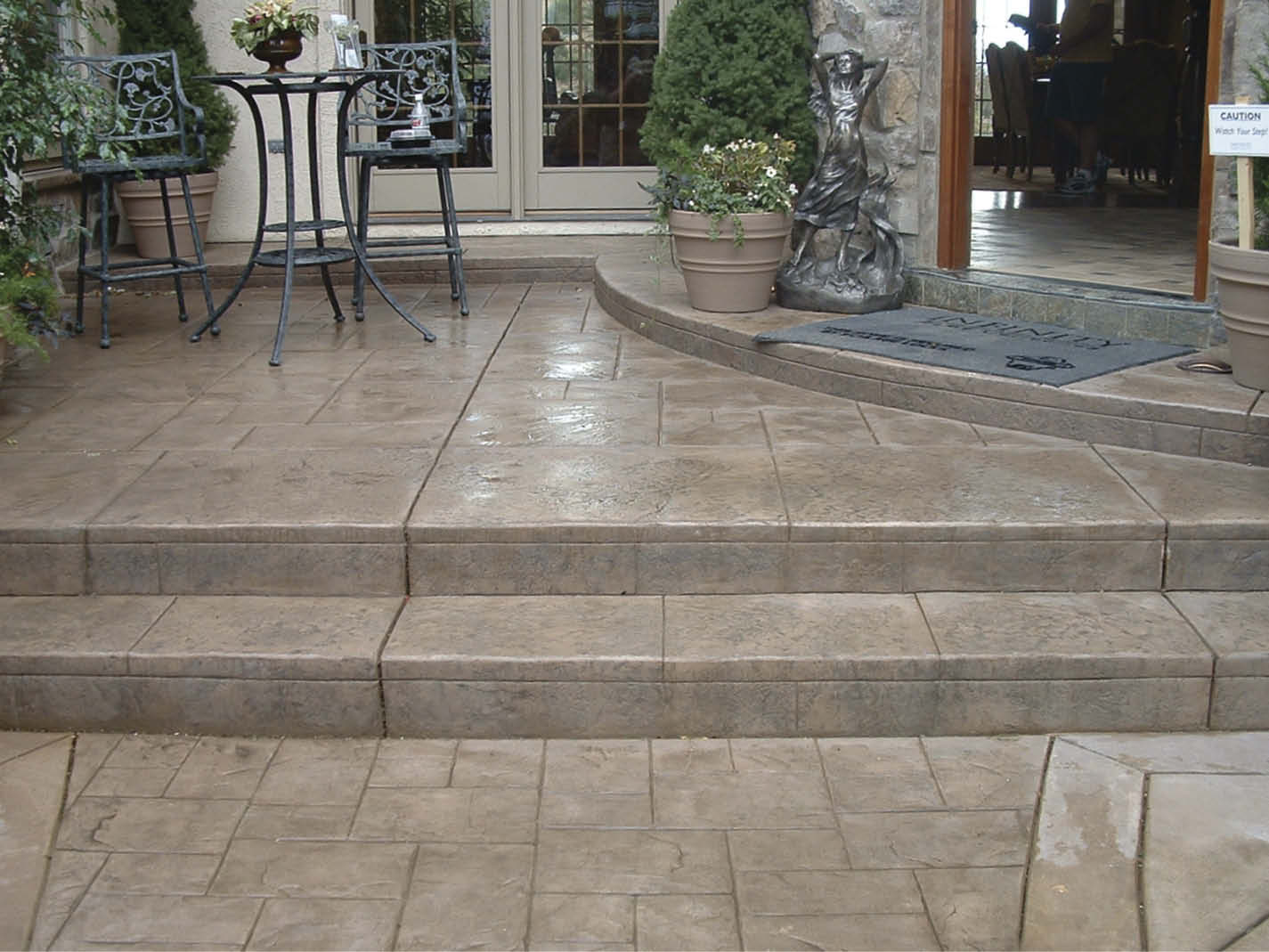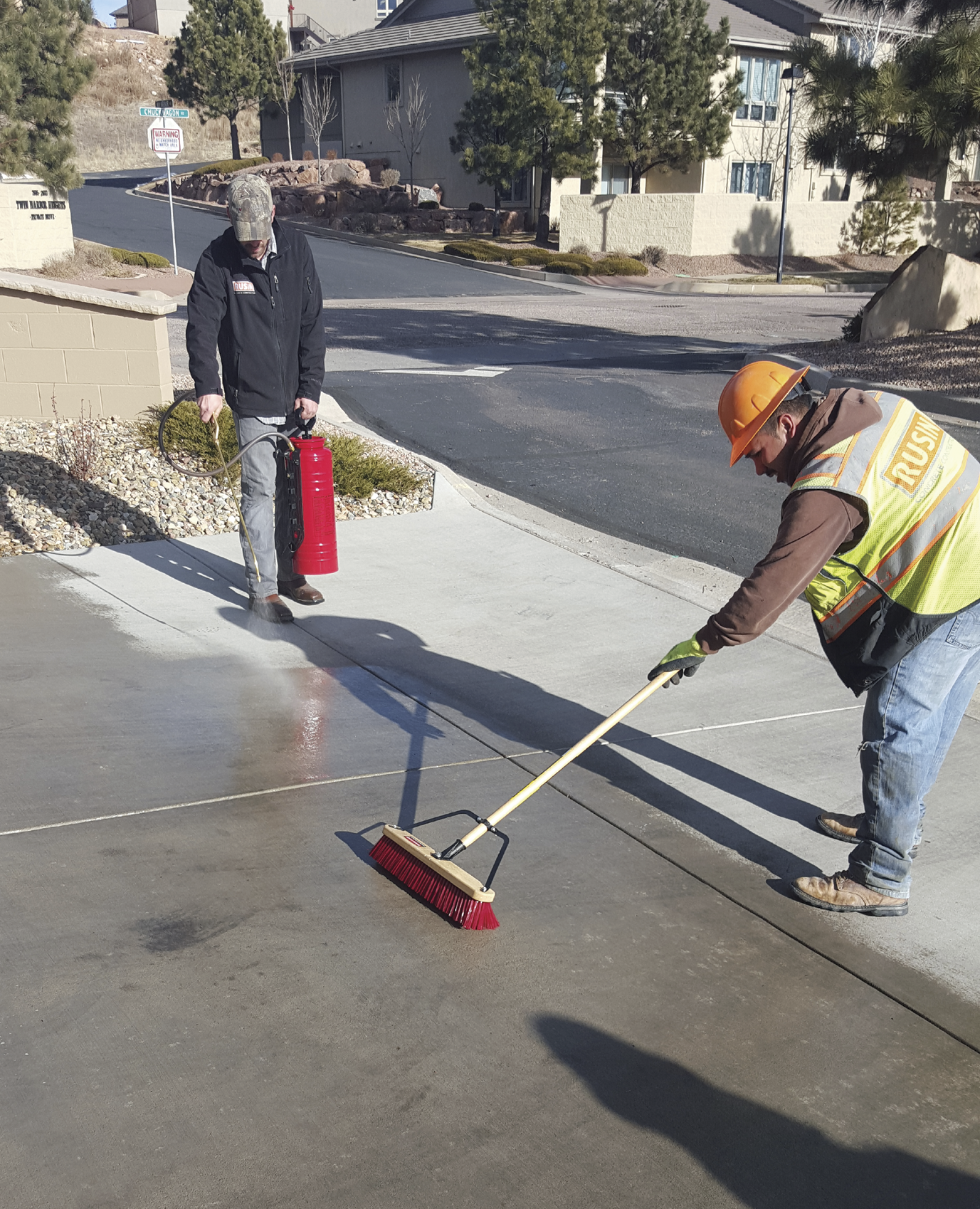Very recently I discovered that my home state of Colorado will lower VOC limits for Architectural Industrial and Maintenance (AIM) coatings effective May 20, 2020. At this point, they will adopt the Ozone Transport Commission (OTC) VOC limits.
I’m a bit embarrassed to say that, though the new law passed almost one year ago, I’m just now hearing about it. This confirms that staying up to date with ever-changing VOC laws is a full-time job, and I think state governments don’t do a very good job of making industry aware of such changes.
With that in mind, it’s a good incentive to review what VOC regulations for concrete are and update how the regulations impact many products used on concrete projects daily.
What are VOCs?
Volatile Organic Compounds (VOCs) are carbon-based gases such as xylene, ethanol, benzene and formaldehyde that are released from certain solvents, plastics or rubber. When the environment warms the gases by heat from sunlight, they can combine with nitrogen oxides to create ground-level ozone, or smog.
Unlike the naturally occurring ozone in the upper atmosphere that serves as a barrier against harmful ultraviolet radiation from the sun, ground-level ozone can adversely impact the environment and atmosphere and carry dangerous consequences for humans.
It’s important to note that a VOC is different from a hazardous material. Not all chemicals that are VOC emitters are considered hazardous and vice versa. Case in point is acetone, which is considered hazardous because of its volatility. However, it’s not considered a VOC and falls on the VOC-exempt list of solvents. Proper labeling will indicate when a product is hazardous as well as its VOC contents.
Regulations concerning the manufacture and use of sealers and coatings for concrete have been the source of much discussion and confusion. To try to simplify the matter, the following is a brief summary of how the U.S. Environmental Protection Agency’s 1999 Architectural Coating Rule for Volatile Organic Compounds impacts the manufacture and use of sealers and coatings in the concrete industry in 2020.
As mentioned earlier, regulations change often, so do your own research concerning VOC regulations in the region you live or work.
Setting the limits
The EPA published the architectural coatings rule (63 FR 48848) on Sept. 11, 1998, under authority of Section 183(e) of the Clean Air Act. This rule took effect in 1999. It limits the amount of VOC that manufacturers and importers of architectural coatings can put into their products.
The rule also has container labeling requirements for architectural coatings. There are different options for complying with the VOC limits. This includes exemptions for products that may be hard to reformulate and/or small quantity manufacturing and packaging (such as samples). However, the bottom line is most sealers, coatings, cures, stains, waterproofers and cure-and-seals for concrete fall under these guidelines.
The question then remains: what are the limits for the product I’m using and which guideline does it fall under?
Location, location, location
To answer this question, you must know what category the product you’re manufacturing or using falls under (i.e., sealer, coating, stain, etc.) and that region’s particular VOC limits. As an installer, most of that work is taken care of by the manufacturer or distributor, but it’s still your responsibility to understand the guidelines and work within them.
Regarding sealers and coatings for concrete, there are federal standards, state and multistate group regulations. In some cases, counties or air quality management districts have also set their own regulations. To complicate matters further there are 13 categories of concrete sealers, coatings, releases and stains, each with its own VOC limit that can vary greatly depending on where you’re using the product.
This series of different regulations can complicate matters when determining if a concrete sealer or coating meets the VOC regulations for that area.
So which regulation do you need to follow? It always comes down to the specific product and the regulation governing the region where you are applying the product. What is fine to use in one place may be off limits in another.
When in doubt, check it out
It’s important to note that VOC regulations aren’t static, and legislators are always proposing and implementing changes. In July 2014, several Northeastern states in the OTC and local California Air Districts proposed amendments. Notably OTC Phase II received approval that year and both Maryland and Delaware adopted it. Those changes took effect Jan. 1, 2017.
Seven counties in Utah also adopted OTC Phase II guidelines in 2015 that went into effect in 2017. Most recently Colorado adopted OTC VOC limits that go into effect May 20, 2020.
You can find out the VOC content and category for the sealer or coating you’re using by looking at the MSDS or specification sheet for that product. For more information on solvents, VOC regulations and the Architectural Coating Rule for Volatile Organic Compounds (63 FR 48848) check out the resources below. Always check local regulations if you’re in doubt about VOC limits.
www.epa.gov
www.eaglesealer.com/voc-regulations
www.chemicalwatch.com/77489/feature-us-states-adopt-tough-line-on-volatile-organic-compounds#overlay-strip
Regulatory Regions
The following is a list of AIM Coatings VOC Regulatory Regions as of Jan. 1, 2020:
Federal AIM – Any state or region not impacted by a multistate or air quality district regulation. www.epa.gov
CARB – California Air Resources Board. Made up of 36 air management districts in the state of California. www.arb.ca.gov/homepage.htm
LADCO – Lake Michigan Air Directors Consortium. Made up of the following states: Ohio, Indiana, Michigan, Illinois, Wisconsin and Minnesota. www.ladco.org/about-us
OTC – The Ozone Transport Commission. Made up of the following states: Connecticut, Delaware, the District of Columbia, Maine, Maryland, Massachusetts, New Hampshire, New Jersey, New York, Pennsylvania, Rhode Island, Vermont and Virginia. www.otcair.org
Maryland – On Jan. 1, 2017, Maryland adopted VOC rules similar to CARB. There is a sell-through period of three years for a product manufactured prior to Jan. 1, 2017.
Delaware – On March 1, 2017, Delaware adopted VOC rules similar to CARB. Products manufactured before March 1, 2017, will be allowed to be sold or used after March 1, 2017.
SCAQMD – South Coast Air Quality Management District. Made up of the following counties in Southern California: Orange County and the urban portions of Los Angeles, Riverside and San Bernardino counties. www.aqmd.gov
Utah (Salt Lake City area) – Utah counties of Box Elder, Cache, Davis, Salt Lake, Tooele, Utah and Weber adopted VOC rules similar to CARB. The rest of the state follows federal limits.
Colorado – OTC limits take effect May 20, 2020, for the entire state.
Canada – Canada has standardized VOC limits for the entire country similar to OTC.
Arizona’s Maricopa County (Phoenix area) – Low VOC rules similar to OTC. The rest of the state follows federal limits.


















